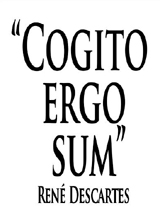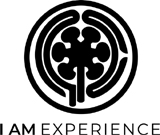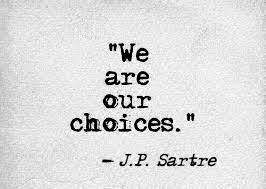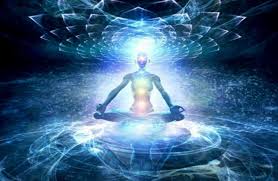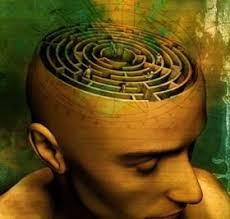Notes on counselling
The ‘I-Am’ Experience
Abstract
The ‘I-Am’ experience is an important psychotherapeutic tool. Existentialists shifted the ‘I’ from the mental ego of Descartes to the ‘sense of being’ that was different from the ego. In the consciousness perspective, the ‘I’ can be shifted still behind to the universal ‘I’ and finally to the True Self or Person giving a radical view to existence.
Descartes’ famous aphorism cogito ergo sum —‘I think therefore I am’, hounds the inquisitive intellect even today though it was antedated by Augustine’s Fallor ergo sum — ‘I am deceived therefore I am’. It supported the Cartesian dualism where one could have doubts about the physical world but have invincible faith on the idea that mind existed as an entity different from the physical world though they were casually connected.
A lot of controversies about the Cartesian dualism exists. Descartes himself proceeded by doubting everything and concluded that the very act of doubting was itself an act of consciousness. One could doubt anything on earth but could not doubt that one had the capacity to doubt! This naturally led to the position: I cannot doubt that I think; and if I think, there must be a thinker; it thus follows that ‘I think therefore I am’ or cogito ergo sum (1). While not entering into the philosophical nuances, one thing stands out — the primacy of the human mind and its attribute of thinking that makes the human being the crown of creation. ‘I’ as a unique human entity would lose its superiority if it was linked not with thinking but with sensory perception or sense-linked hedonism. ‘I’ as a unique entity stands out because the mind can cognise, introspect, doubt, judge and exert will-power.
These properties of ‘I’ are a fact of daily existence and have helped mankind to dominate the world. What if there are other experiences supporting other world-views! If one world-view can be accepted due to being experientially perceived, another experiential world-view could also be accepted.
At the level of the outer being or surface personality , the supremacy of the mind in designing life is unquestionable. The problem arises if we acknowledge that the outer being is not the sole Reality but there are deeper levels of the being behind the surface personality with shifting nuances of the ‘I’.
One may argue that this may be interesting for mystics and metaphysicians but would be hardly of any relevance to psychology. But psychology itself cannot remain tied down to the surface being but must proceed to the depths of existence if it has to serve a greater Reality. Besides, the counsellor may be faced with awkward situations where superficial explanations do not explain the relevance of the ‘I’.
The ‘I-Am’ dream-experience
Rollo May narrates a fascinating ’I-am’dream-experience of a 28-year-old lady who presented with severe anxiety spells in closed spaces, severe self-doubts and eruptions of uncontrollable anger. That she was born an illegitimate child was always a reason for curses by her mother and relatives. In the fourth month of therapy, she had an unusual dream-experience which she noted down with remarkable clarity, parts of which are excerpted here:
“I remember walking that day under the elevated tracks in a slum area, feeling the thought, ‘I am an illegitimate child.’ I recall the sweat poring forth in my anguish… Then I understood what it must feel like to accept, ‘I am a Negro in the midst of privileged whites’, or ‘I am blind in the midst of people who see’. Later on I woke up and it came to me this way, ‘I accept the fact that I am an illegitimate child. But ‘I am not a child anymore’. So it is, ‘I am illegitimate’. That is not so either. ‘I was born illegitimate’. Then what is left? What is left is this, ‘I Am’. This act of contact and acceptance with ‘I am’, once gotten hold of, gave me (for the first time) the experience, ‘Since I am, I have the right to be.’
“What is this experience like? It is a primary feeling…It is the experience of my own aliveness not caring whether it turns out to be an ion or just a wave. It is like when a very young child I once reached the core of a peach and cracked the pit, not knowing what I would find and then feeling the wonder of finding the inner seed, good to eat in its bitter sweetness….It is like a sailboat in the harbor being given an anchor so that, being made out of earthly things, it can by means of its anchor get in touch again with the earth, the ground from which its wood grew; it can lift its anchor to sail but always at times it can cast its anchor to weather the storm or rest a little… It is my saying to Descartes, ‘I Am, therefore I think, I feel, I do.’
“It is like an axiom in geometry — never experiencing it would be like going through a geometry course not knowing the first axiom. It is like going into my very own Garden of Eden where I am beyond good and evil and all other human concepts. It is like the poets of the intuitive world, the mystics, except that instead of the pure feeling of and union with God it is the finding of and union with my own being….It is a ‘Matter of Fact’ in the etymological sense of the expression…. it is ceasing to feel like a theory towards one’s self (2).”
(It is very interesting that spontaneously this subject refuted Descartes by identifying her ‘I-Am’ experience with an axiom in geometry, for Descartes himself was the inventor of co-ordinate geometry that is still used!)
Neuropsychological correlates
This dream experience, which might be interpreted to subjugate reason to emotional fervour, predated the neuropsychological findings accumulated from a rich repertoire of clinical experience by Dr. Antonio Damasio, whose treatise, Descartes’ Error , chronicles how ‘I think’ cannot be an isolated phenomenon but is linked with the whole. He explored real-life cases to prove that reason without emotion was greatly impoverished. Reason, presumed to be arising from the neocortical structures (that evolved later) cannot be strictly segregated from the biological regulation modulated presumably by subcortical structures (that evolved earlier). Rationality as a quality has not been merely superimposed on the biological apparatus but arises also from it and with it. While rationality seems to be a neocortical phenomenon, emotions are played out under the control of both cortical and subcortical structures. Damasio describes feelings to be a variant of emotions, albeit at times not originating in emotions, yet offering us the cognition of our visceral and musculoskeletal state, letting us mind the body (3).
Beyond neurological correlates
If dream-work is a valid psychological instrument, it would be unfair to judge the Cartesian dualism based on the analysis of neurological correlates alone. After all, Descartes’ own thought was triggered by a series of three dreams in his twenty-third year, on the night of 10th November, 1619, the eve of St. Martin’s day when crowds commemorated the souls of the departed. The third dream had an encyclopaedia and a collection of poems by different authors. He opened the first book to find the verse, Quod vitae sectaboriter? (“What road in life shall I follow?”). An unknown person gave him a piece of verse beginning with Est et Non [yes and no]. By this time the encyclopaedia reappeared and was no longer complete as it was when he saw it before.
Descartes started analysing his dream while asleep and understood that the encyclopaedia signified scientific knowledge while the anthology of poetry suggested philosophy and wisdom combined. He woke up and continued to interpret his dream. The collected poets signified revelation and enthusiasm; the Est et Non — the ‘yes’ and ‘no’ of Pythagoras was interpreted to stand for truth and falsity of human knowledge.This dream led Descartes in future to discard all his previous beliefs in search for a new foundation of knowledge; it was to be his basis for proceeding by doubting everything till he found that he could not doubt the fact that he doubted (4).
The sense of being and the ego
Rollo May, in an existential analysis of the dream-experience of the 28-year-old lady born an illegitimate child narrated above, explains that her ‘I-Am’ experience reflects the ‘sense of being’ which must be differentiated from ego functionings. The ‘sense of being’ arises from a consciousness that is deeper than the ego. The ego functions in the psychosocial space, and it cannot avoid being a reflection of the external world. The ‘sense of being’ refers to the totality — the wholeness of one’s experience, both conscious and unconscious and views the psychosocial space from an inner and deeper psychological space which is outside the purview of the ego. Rollo writes, “My sense of being is not my capacity to see the outside world, to size it up to assess reality; it is rather my capacity to see myself as a being in the world,to know myself as the being who can do these things. It is in this sense a precondition for what is called ‘ego-development’. The ego is the subject in the subject-object relationship; the sense of being occurs prior to this dichotomy’ (5). Thus the sense of being does not mean that ‘I am the subject’ but “I am the being who can, among other things, know himself as the subject of what is occurring(6).”
Existentialists speculated what could happen if the ego is considered to be more important than the ‘sense of being’. If the ego is considered to be the basic norm, the human being will always be a passive recipient of overwhelming forces, “whether the forces be identified as the Id or the vast industrial juggernaut in Marxian terms or the submersion of the individual as ‘one among many’ in the sea of conformity, in Heidegger’s terms (7).” The sense of being in ontological terms must be the basic norm rather than the ego.
Existentialism to Consciousness-based Psychology
In terms of consciousness based on an Aurobindonian perspective, the ‘sense of being’ changes its denouement with shifting nuances as one traverses the depths of the being.
The outer being or surface personality revolves around the ego in the psycho-social space. The ego has not dropped like a meteorite from the sky but emerges as constituted by the parts of consciousness in the surface being. It is thus constituted from the mental, vital (the repertoire of life-energy) and the physical planes. The problem is that it is skewed and biased towards any of the three components. To the thinker, the mental ego is prominent. In the case of the dynamic individual, the vital ego dominates. The classical body-builder basks in the glory of the physical ego. As a result of its skewedness, the ego cannot harmonise the surface being which is thus always in a state of chaos.
Behind the surface being is the inner or subliminal being in the inner psychological space, which connected to the cosmic consciousness, rises up to the Superconscious and sinks below through the Subconscious to the terrestrial Inconscience. It is not under the ambit of the ego but is supported by adeeper inmost being. When existentialists talk about the ‘sense of being’ that antedates the ego, they usually refer to an experiential construct in this inner being. However as the inner being is in contact with the cosmic consciousness, the ‘sense of being’ described in existentialism expands to become a universal being . Of course, for the ordinary individual who does not want to explore his self, the resources of the inner being may remain untapped. A shift from the individual ‘I’ to the universal ‘I’ is thus a matter of choice. People who do inner work on themselves, yogis and mystics who have an outreach to the Infinite by transcending the ego, as well as poets, artists and musicians who align with universal rhythms, are more easily connected with the cosmic consciousness where the individual ‘I’ becomes the universal ‘I’.
At a certain point of inner growth, the universal ‘I’ has to be transcended. The universal ‘I’ arises in the cosmic matrix but the cosmic consciousness holds not only great positive forces, it also holds mighty negative forces. The cosmic Inconscience is the repository of all cosmic schemata that have undergone dissolution through time immemorial. If one can get uplifted by the positive universal rhythms of the cosmic consciousness, one can also run the risk of succumbing to the giant negative forces that have equal right to exist. At a certain optimal point of the quest for Truth, one needs to align with the Transcendent ‘I’ too. The Transcendent, the Universal and the Individual are different poises of the same Reality and unless they are simultaneously experienced, the wholeness of Reality is missed.
Deeper to the inner being is the soul space which harbours the inmost being. It is a fourth-dimensional space aligned on one hand with the Transcendence and on the other hand with the Universal and the Individual. Sri Aurobindo describes two poises of the Spirit in this space. There is the unborn poise of the Ātman which supports the manifestation and thus holds both the dimensions of personality and impersonality. It is the poise of infinity and eternity and beyond the ambit of linear time and circumscribed space. There is also a projection of the Ātman within the manifestation as the evolving poise of the soul which Sri Aurobindo named as the Psychic Being. It is the centre of integration of the personality and harbinger of peace, love, beauty, harmony and unalloyed Bliss beyond the dualities of human nature.
Swami Rama explains that the Ātman already exists and is the source of all of one’s knowledge (8). It is the basis of knowing rather than an object to be known, the basis of existence rather than an object of perusal. It is aligned with the transcendent poise of Reality. Sri Aurobindo explains that our outer personality is “a temporary constructed personality, not the true immortal Person (9)”, a “passing experimental and structural self (10)” in consonance with the Zeitgeist or Time-Spirit born from an interaction with the Ātman (or the true being or Person) and Nature. In that way, the Ātman or the real Person precedes the universal ‘I’, the ‘sense of being’ as well as the ego. He clarifies that to get to this truth, one has “to recoil from the egoistic forms of activity and get rid of the sense of an “I” that acts(11).”
Implications in psychology
As one shifts the domain of self from the outer ego-linked ‘I’ to the ‘sense of being’ in the inner being which becomes the universal ‘I’, one simultaneously shifts from the chaos and disharmony in the surface personality to a harmonious poise of well-being. The axiom that ‘I think therefore I am’ is a product of the mental ego in the outer being. The outer being is itself chaotic as the ego that holds it is skewed in nature. So the ‘I’ who asserts oneself as the harbinger of existence is susceptible to the fluctuations of mood rising from the vital nature and is not immune from the diseases of the body. The ‘I’ of Descartes diminishes in stature as one shifts to the sense of being in the inner realms that is connected with the cosmic consciousness. It becomes irrelevant when one reaches the soul-space where actually the axiom ‘I am therefore I think, I feel, I do’ becomes a higher experiential construct. The Ātman alone, in the simultaneous poise of personality and impersonality, can proclaim ‘I Am’.
In other words, if Descartes’ notion of ‘I’ arises from the mental ego, it is a phenomenal representation in the surface being and can be surpassed by a deeper ‘I’, which is a fundamental Self, Being, Person or Puruṣa and who is essentially non-physical. The phenomenal ‘I’ cannot be an isolated integer, it arises in the same matrix of consciousness from where the bodily systems and emotions arise.
Neurophysiologist, Sir John Eccles and philosopher, Karl Popper accepted the Descartes’ notion of ‘I’ not in a phenomenal but in a fundamental sense.Descartes himself had written, “this ‘I’ — that is the soul by which I am what I am — is entirely distinct from the body” and could survive the destruction of the body. However he used the terms soul (l’âme) and the mind (l’esprit) interchangeably, leading to a confusion of terminologies and concepts (12).
The Ātman in the Indian tradition is actually indestructible and independent of the body though it sanctions the bodily life and is projected in the manifestation as a soul-principle.
It seems that the young lady whose dream-experience is enumerated above had a momentary glimpse of the ego-surpassing fourth-dimensional principle for her extraordinary ‘I-Am’ experience.In a world besieged by boredom, meaninglessness and alienation, constructing the ‘I-Am’ experience would be a valuable tool in psychotherapy.
References
1. Fulford KWM, Thornton T, Graham G. Oxford Textbook of Philosophy and Psychiatry.Indian ed. NY:Oxford University Press; 2007, p. 627.
2. May R. Contributions of Existential psychotherapy in May R, Angel E, Ellenberger HF (eds). Existence – A New Dimension in Psychiatry and Psychology. NY: Clarion Paperback; 1967, pp. 42-3.
3. Damasio, AR. Descartes’ Error— Emotion, Reason and the Human Brain. UK: Papermac Edition, 1996, p. 159.
4. Raphael F, Monk R (eds). The Great Philosophers. London: Phoenix; 2000, pp. 98-100.
5. May R. Contributions of Existential Psychotherapy, p. 46.
6. Ibid.
7. Ibid., p. 47.
8. Rama S. Perennial Psychology of the Bhagavad Gita. Allalabad: India Himalayan Institute; 2014, p. 6.
9. Sri Aurobindo. The Synthesis of Yoga. 5th ed. Pondicherry: Sri Aurobindo Ashram Trust: 1999, p. 216.
10. Ibid., p. 274.
11. Ibid., p. 216.
12. Raphael F, Monk R (eds). The Great Philosophers, pp. 108-9.
Dr. Soumitra Basu, a practising psychiatrist and member of SAIIIHR, is the Director of a school of psychology, Integral Yoga Psychology. He is also one of the editors of NAMAH.
Share with us (Comments,contributions,opinions)
When reproducing this feature, please credit NAMAH,and give the byline. Please send us cuttings.

